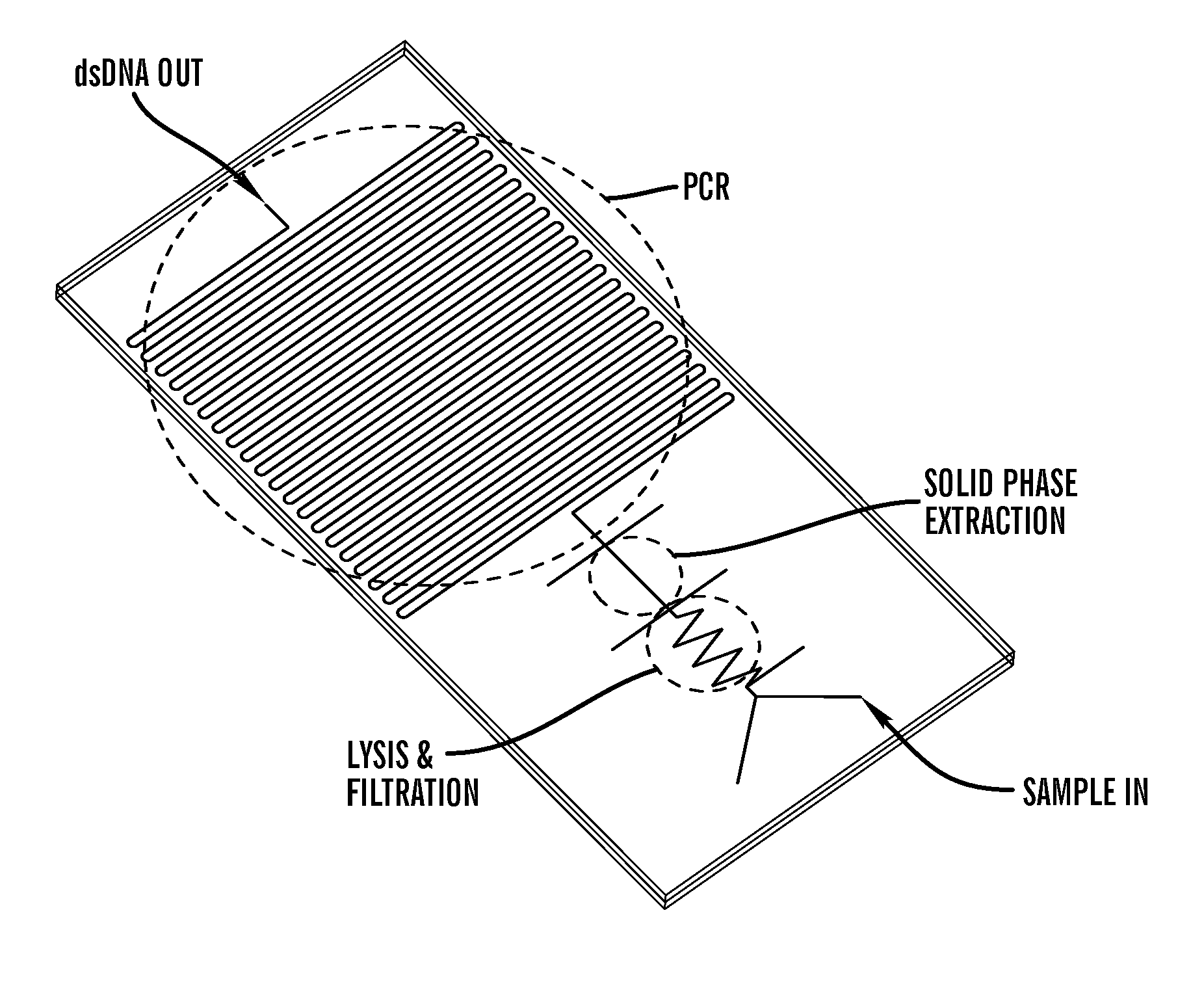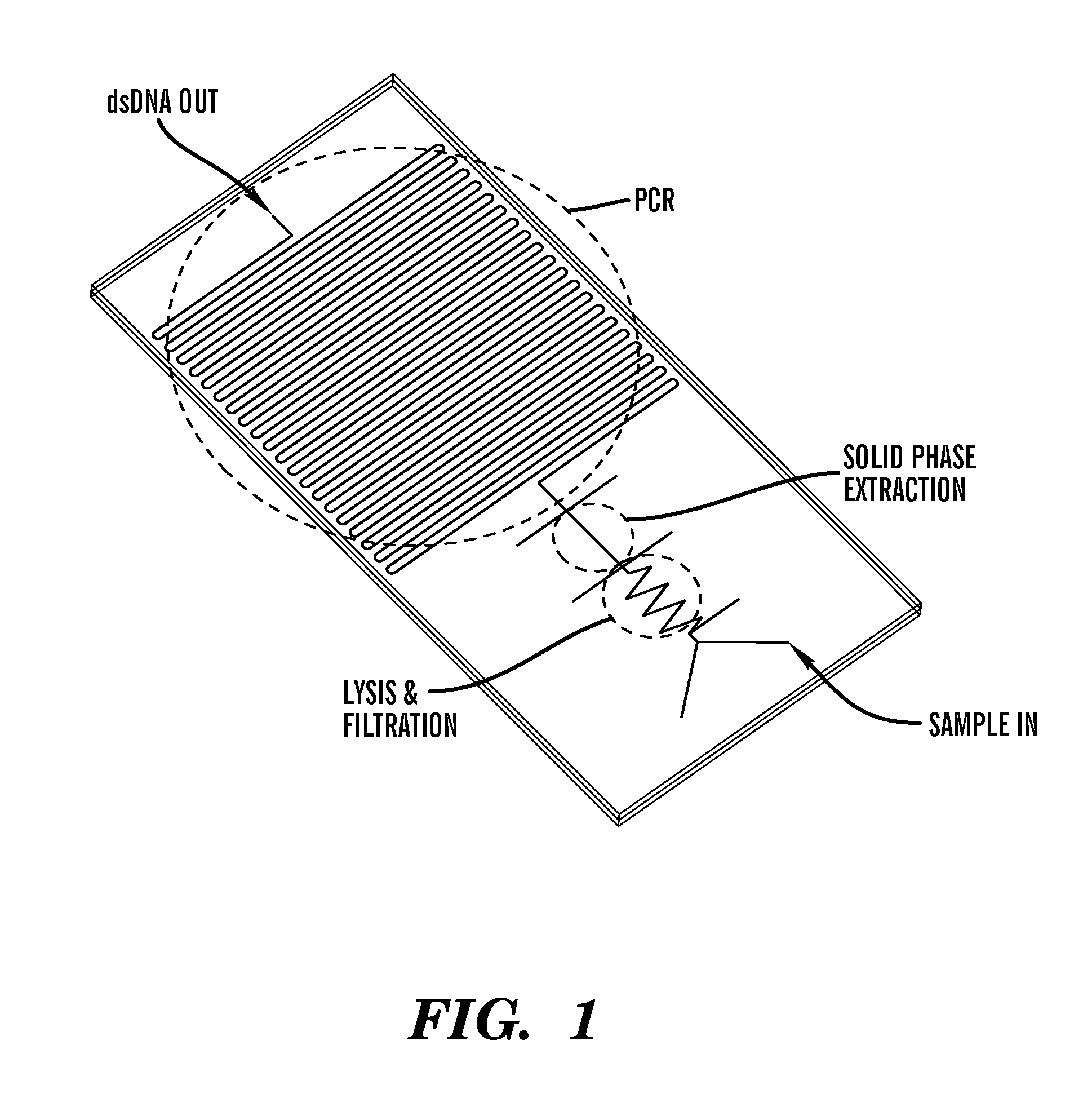Method for bacterial lysis
- Summary
- Abstract
- Description
- Claims
- Application Information
AI Technical Summary
Benefits of technology
Problems solved by technology
Method used
Image
Examples
example 1
Surface Treatment of Carbon Nanotubes Prior to Embedding in Monolith
[0343]Multi-Walled Carbon Nanotubes within Porous Polymer Monoliths. After assessing and testing a variety of pre-polymer systems for use in the device, the inventors discovered that a pre-polymer system comprising the non-polar solvents, (cyclohexanol / dodecanol) for use with the non-polar monomer (BUMA) was selected. The polar solvents selected, (ethanol / methanol), were selected based upon their miscibility with the polar monomer, (GMA), and results reported in the literature42. The confidence in this pairing was high due to demonstrated successes within the laboratory41.
[0344]In some instances the inventors sometimes added additional constituent parts are added to the pre-polymer for functionality, such as 2-acrylamido-2-methyl-1-propane sulfonic acid, which is frequently used as an electro-osmotic flow promoter, (EOF). Details on each of the pre-polymer formulations that can be used are disclosed in the methods s...
example 2
Generation of Polymers Containing Carbon Nanotubes
[0349]The inventors determined the concentrations of nanotubes to use as part of the overall pre-polymer system. The inventor assessed the concentrations of BUMA based pre-polymer solutions with nanotube concentrations from 0.001M to 0.5M that resulted in success fabrication. The inventors discovered that at the higher concentrations the repeatability began to suffer and after reviewing scanning electron micrographs a concentration of 0.25M was selected for repeated fabrication purposes.
[0350]In the case of the GMA based pre-polymer system the stock solution purchased from Nanolabs was initially used, (0.0033M in ethanol), providing a much lower concentration than that used in the BUMA system. After discovering a higher success with the lower concentrations, the inventors used suspension that were concentrated ten-fold and a larger concentration, (but still much lower concentration than used in the BUMA system) to fabricate the GMA p...
example 3
Grafting Channels for Adherence of Carbon Nanotube Impregnated Porous Polymer
[0353]Processing of the Carbon Nanotube Impregnated Porous Polymer Monolith
[0354]Once a pre-polymer solution was prepared and a polymeric microfluidic chip was fabricated the pre-polymer solution was pipetted into the channels and in-situ polymerization can be used to create the porous polymer monolith. Before this can happen, the inventors added an additional grafting layer to the inside of the channels. Since Zeonex is a Teflon-like material, it exhibits extremely low surface energy making it difficult to get the porous polymer monolith to bind to the channel wall. In order to solve this problem, the inventors used a “grafting mix” comprising a pre-polymer solution, comprising of a 1:1 mixture of Ethlyene diacrylate, (EDA) and Methyl methacrylate, (MMA), combined with enzophenone (an photo-sensitizer), and introduced to the channels following a thorough methanol wash (demonstrated by Bhattacharrya and Kla...
PUM
| Property | Measurement | Unit |
|---|---|---|
| Length | aaaaa | aaaaa |
| Length | aaaaa | aaaaa |
| Diameter | aaaaa | aaaaa |
Abstract
Description
Claims
Application Information
 Login to View More
Login to View More - R&D
- Intellectual Property
- Life Sciences
- Materials
- Tech Scout
- Unparalleled Data Quality
- Higher Quality Content
- 60% Fewer Hallucinations
Browse by: Latest US Patents, China's latest patents, Technical Efficacy Thesaurus, Application Domain, Technology Topic, Popular Technical Reports.
© 2025 PatSnap. All rights reserved.Legal|Privacy policy|Modern Slavery Act Transparency Statement|Sitemap|About US| Contact US: help@patsnap.com



